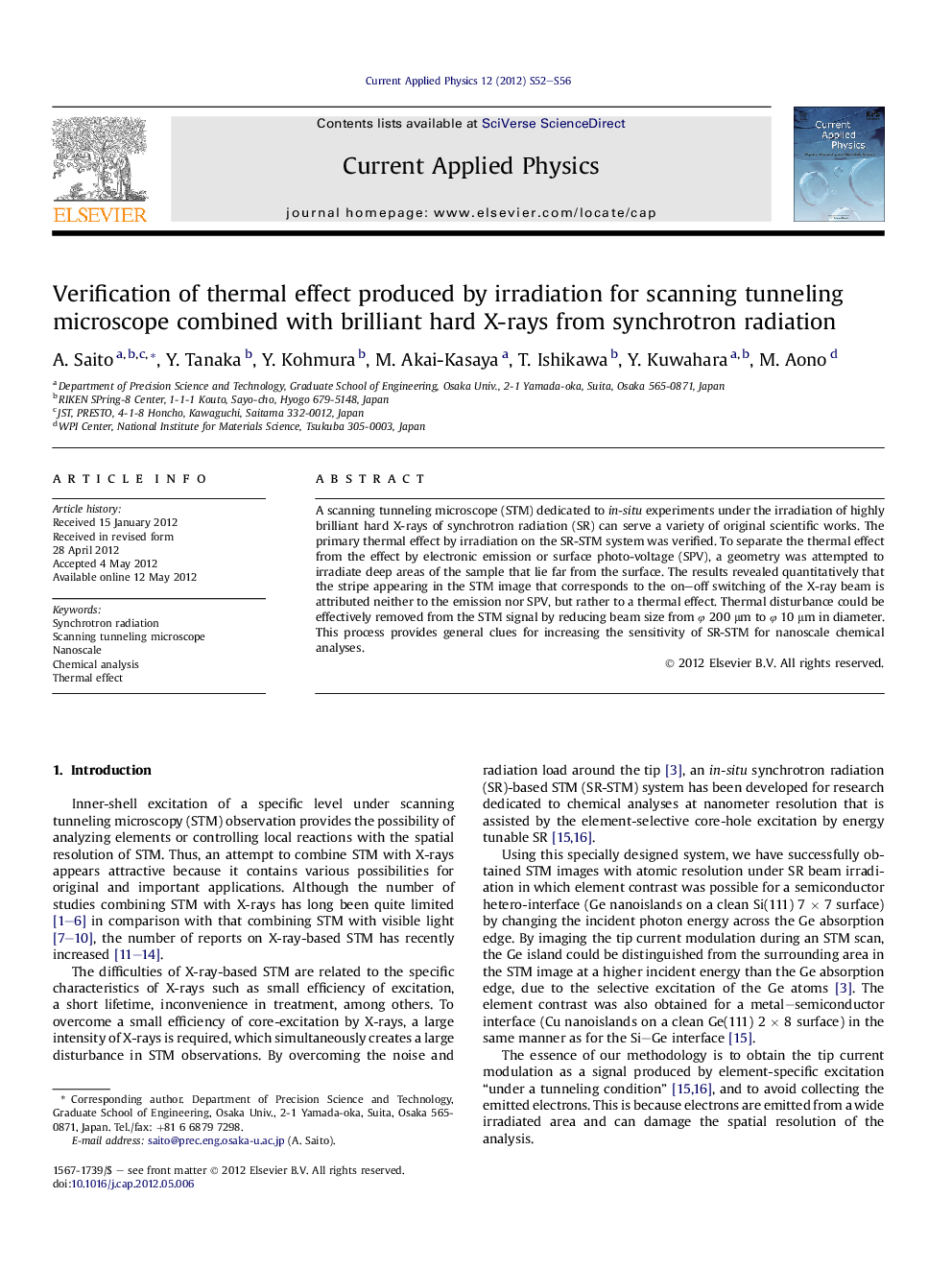| Article ID | Journal | Published Year | Pages | File Type |
|---|---|---|---|---|
| 1787381 | Current Applied Physics | 2012 | 5 Pages |
A scanning tunneling microscope (STM) dedicated to in-situ experiments under the irradiation of highly brilliant hard X-rays of synchrotron radiation (SR) can serve a variety of original scientific works. The primary thermal effect by irradiation on the SR-STM system was verified. To separate the thermal effect from the effect by electronic emission or surface photo-voltage (SPV), a geometry was attempted to irradiate deep areas of the sample that lie far from the surface. The results revealed quantitatively that the stripe appearing in the STM image that corresponds to the on–off switching of the X-ray beam is attributed neither to the emission nor SPV, but rather to a thermal effect. Thermal disturbance could be effectively removed from the STM signal by reducing beam size from φ 200 μm to φ 10 μm in diameter. This process provides general clues for increasing the sensitivity of SR-STM for nanoscale chemical analyses.
